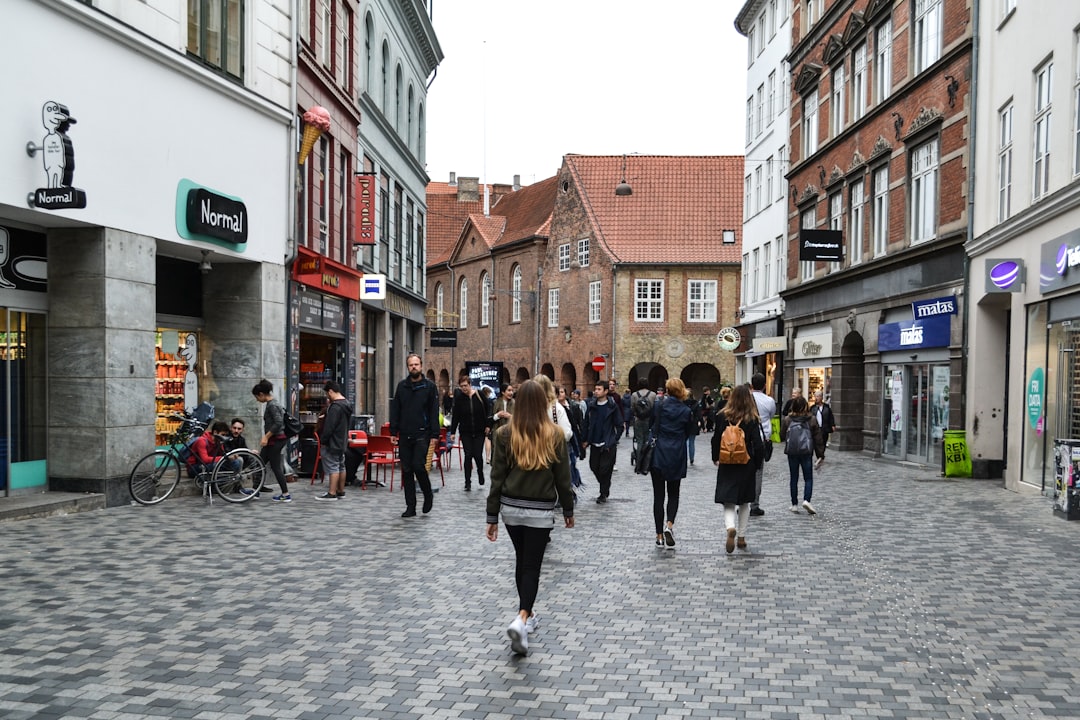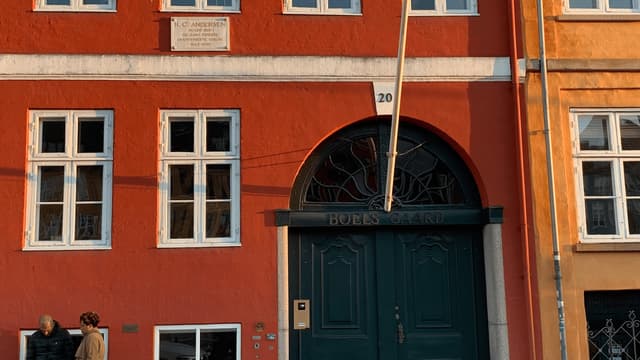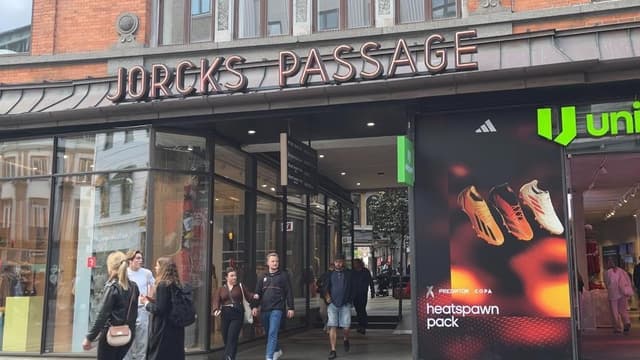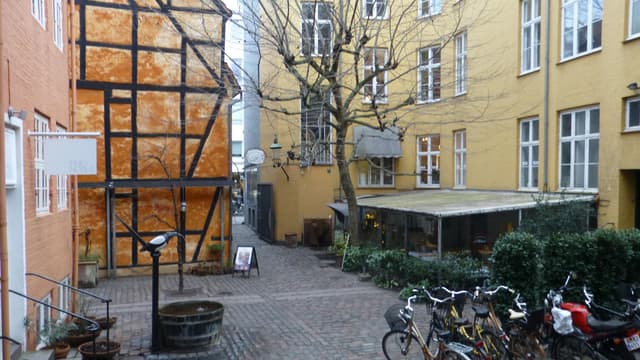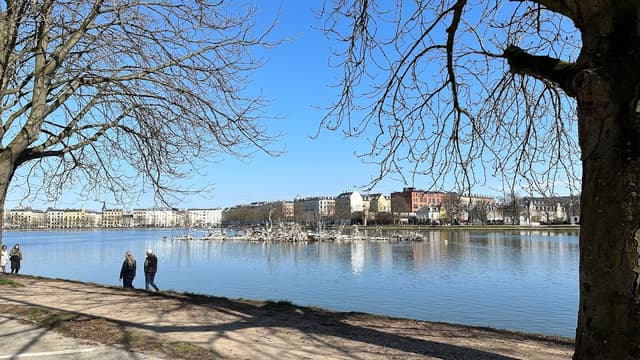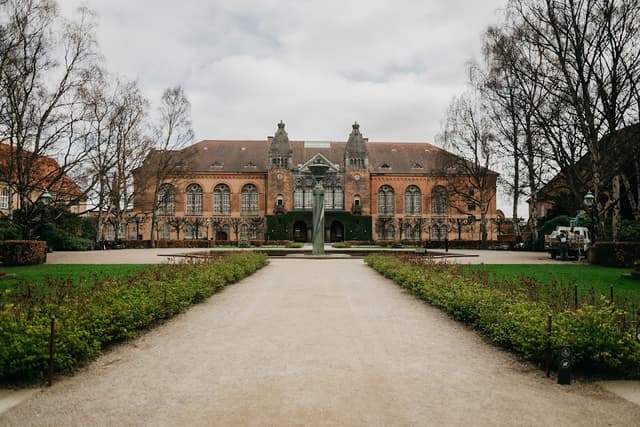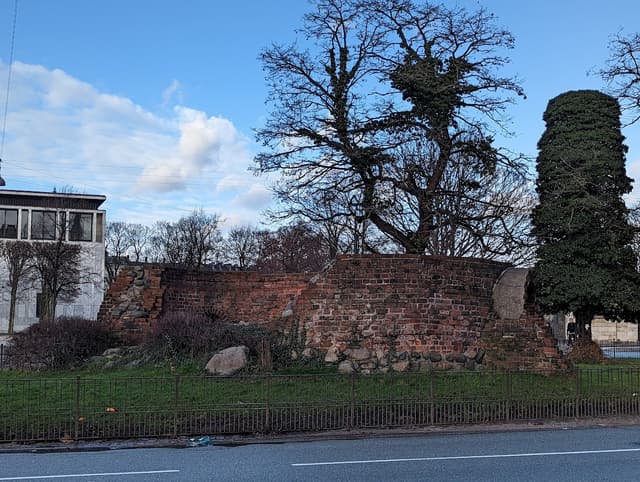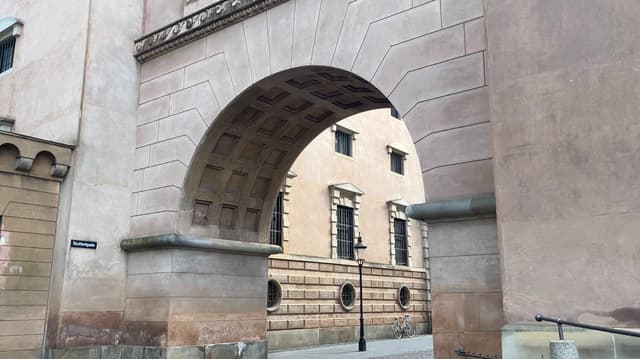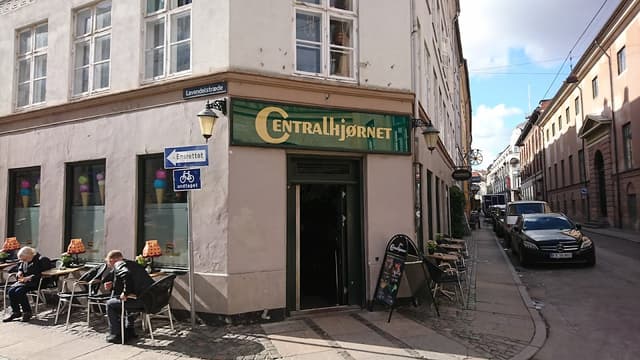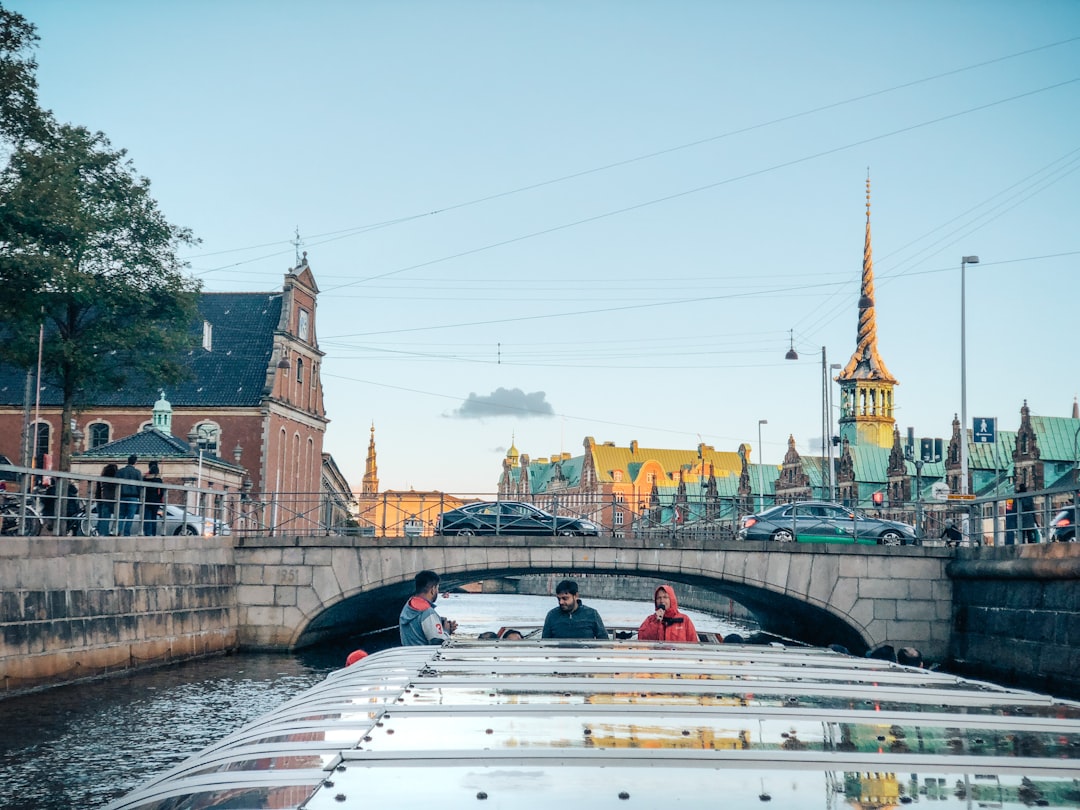Don't forget to watch our video explaining all of these hidden spots and unique attractions in Copenhagen, Denmark. You can watch the video right here:
This guide will help you retrace Derek's steps and see a different side of Copenhagen. Let us know in the video comments what you found the most interesting and if you find some of these spots and post about them on your socials - tag us! We can't wait to see them.
Nyhavn 20
@RobeTrotting
Along the less-photographed side of Nyhavn you’ll find a building that people aren’t taking selfies in front of. It’s this bright red building number 20 where a guy once lived who you know very well. He’s one of the most famous authors in not just Danish history, but the world’s history. Maybe you’ve guessed his name by now, Hans Christian Andersen or H.C. Andersen to the Danes, lived right here at 20 Nyhavn! This is where he wrote the famous fairy-tales 'the Tinder-Box', 'Little Claus and Big Claus', and 'the Princess and the Pea'.

Details
Jorcks Passage
@RobeTrotting
Jork’s Passages bears the name of its developer, Reinholdt Jorck. Today it connects the pedestrian street Strøget and Skindergade, but at one time it was rented out to the KTAS telephone exchange, which opened in the building at its passageway in 1896. Literally thousands of telephone wires extended from the roof, through the passage and connected to customers in the area. Today it’s home to retailers and millions of people walk through the passage each year.

Details
Pistolstræde
@RobeTrotting
Copenhagen's streets wind, are full of dramatic squares, and offshoots. Some of the streets are even old alleyways that have been covered or concealed throughout the centuries just like Pistolstræde, which links Østergade-section of the pedestrianized shopping street Strøget with Ny Østergade. Its L-shape is what gives it the name "Pistol Street".

Details
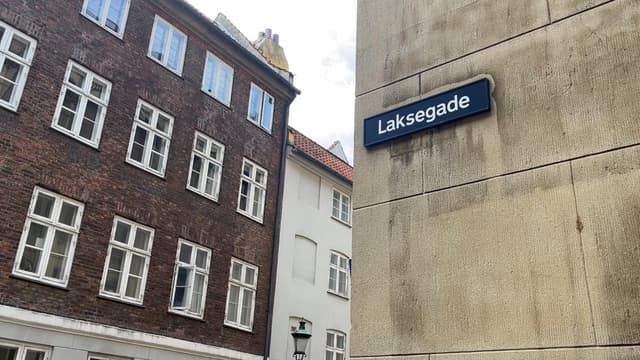
Laksegade 15
@RobeTrotting
Laksegade, the modern-day Salmon Street, may not catch your eye at first glance—but don't be fooled, because this street holds a quirky charm known to many Danes, all thanks to an old saying.
Now, it may be outdated to say, but the phrase is "The devil is loose on Salmon Street" ("Fanden er løs i Laksegade") and it’s talking about this very street. The story behind it? Well, it’s a wild tale from 1826, when something truly otherworldly is said to have happened at Laksegade 15. Picture an ordinary day in 19th century Copenhagen, when stuff started flying out of the house's windows - potatoes, peat, and all sorts of things came raining down onto the street below. And that's not all! Laughter, screams, and even a few curse words echoed from inside the house as the chaos continued. Of course, curious onlookers couldn't resist peeking inside to catch a glimpse of the madness. Some claimed they heard strange growls, while others swore they spotted glowing red eyes. And you won't believe it, but some folks said there was nobody there at all! Naturally, the police were called to investigate this extraordinary spectacle. But here's the twist—once they stepped inside, everything suddenly stopped. The house stood empty, as if nobody had ever been there. No humans, no animals, no clues to point the finger at anyone. Can you guess what people started whispering? Yup, they suspected the devil himself was behind all the ruckus! So, next time you stroll down Salmon Street, remember its hidden tale of mystery and mischief.

Details
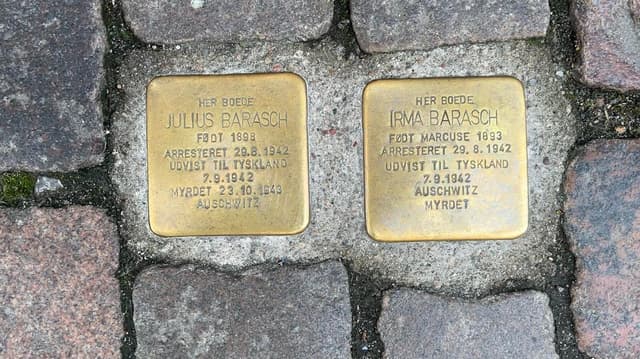
Barasch Stolpersteine
@RobeTrotting
A Stolperstein is a special cube, only ten centimeters by ten centimeters. Attached to it is a shiny brass plate that bears the name and life dates of those who suffered under the cruel hand of Nazi extermination or persecution. It's a small yet powerful symbol of remembrance and respect.
The name Stolperstein itself carries a deep significance. It literally translates to 'stumbling stone', but it holds a metaphorical meaning of being a 'stumbling block' as well. This unique term captures the essence of these commemorative cubes.
Each Stolperstein is carefully placed at the very last residence or workplace freely chosen by the person before they became a victim of Nazi terror. Research about future Stolperstein locations is usually done by local school children and their teachers, victims' relatives, or local history organizations.
Today, over 70,000 can be found in over 1,200 cities around Europe. The first Stolpersteine in Copenhagen were placed in 2019 - a touching way to pay homage to the lives of these victims and acknowledge that you’re walking by the places they called home, and the paths through Copenhagen that they once walked.

Details
Fugleøen
@RobeTrotting
In the middle of the northernmost lake called Sortedams Sø, a tiny island in became autonomous in 1967. "The Bird Island" or Fugleøen, was "liberated" by a group of passionate activists who declared it an independent state separate from Denmark.

Details
Garden of the Royal Library
@RobeTrotting
The Royal Library Gardens is a lovely public garden located between Christiansborg Palace and the Royal Library on Slotsholmen. It has been around since the 1920s and serves as a delightful green haven in this historic part of the city. It’s in the location of Kind Christian the fourth’s old Naval Harbour, so to preserve its connection to the city's maritime history, the gardens feature a small pond at the center and an old mooring ring, similar to those used by ships in the 17th and 18th centuries, embedded in the garden's masonry.
Today, the gardens are filled with beautiful flower beds and large, shady trees. It's a charming place to take a leisurely stroll, especially during the spring and summer seasons. Tucked away behind larger buildings and away from the bustling cobblestone streets, it's considered a hidden gem waiting to be discovered.

Details
Jarmers Tower
@RobeTrotting
The ruins of Jarmer's Tower, or Jarmers Tårn, was once a vital part of Copenhagen’s moat defenses and one of eleven towers connected by the city walls. Built in the early 1500s, Jarmers Tower was part of the city's medieval defenses, but many people walk by without knowing the story of its truly interesting namesake.
The tower was named after Jaromar II, who made his mark in 1259 by breaching the wooden palisades that surrounded Copenhagen's fortification, so Jarmers Tower holds a significant place in Danish folklore. Jaromar attacked Copenhagen in support of the Archbishop of Lund in his conflict with Danish King Christoffer I. Today, when you invade Copenhagen, you can visit the plaza surrounding the excavation site, where Nørre Voldgade transitions into H.C. Andersens Boulevard. It’s, of course, named Jarmers Plads, after a 13th century invader of the city.

Details
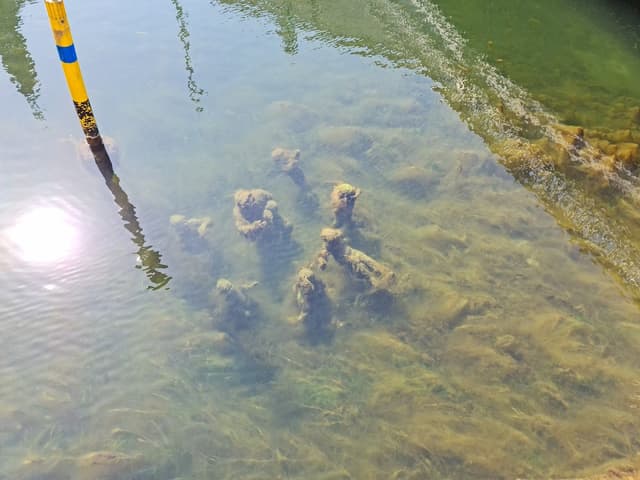
Agnete and the Merman Statue
@RobeTrotting
Agnete and the Merman, is an absolutely enchanting group of bronze sculptures nestled in the beautiful Slotsholm Canal, right next to the Højbro Bridge. You probably won’t surprise you that his is often considered one of Copenhagen's hidden gems, because it’s literally hidden below the surface of the canal. It was created in 1992 by the incredibly talented Danish sculptor, photographer, and author, Suste Bonnen, these sculptures bring to life the captivating tale of Agnete and the Merman. Imagine a merman and his seven sons, arms outstretched in a heartfelt plea for Agnete to come back home. It's a scene filled with emotion and longing, inviting you to delve into the depths of the story. Speaking of the story, "Agnete and the Merman" is a treasured ballad deeply rooted in Danish folklore. Passed down through generations by word of mouth, it's just one of the many fascinating fairy tales that have captivated the Danish people. Mermaids and other fantastical mer-creatures hold a special place in Danish lore, and their presence adds a touch of magic to the cultural fabric.

Details
Slutterigade
@RobeTrotting
Slutterigade roughly translates to "Prison Street," and that is because the archway was designed to connect the prison to the Copenhagen Court House. It was built in 1816 after the previous court house was destroyed by fire. Interestingly, the site used to be the Royal Orphanage. Above the entrance, there's a Danish inscription that translates to "By Law Shall The Country Be Made," which is a quote from the Danish Code of Jutland of 1241. On the prison, you'll find an inscription that says "For the public safety." When in operation, the walkway on the arch was used to lead the newly condemned prisoners from the courthouse to the prison. This earned it the appropriate nickname of "the Bridge of Sighs".

Details
Centralhjørnet
@RobeTrotting
There are a lot of reasons to go to CentralHjørnet; it's SUPER Danish, they have incredibly ornate seasonal decorations that make you feel like you're having a drink on a parade float in Disney World and it's the oldest gay bar in the world! Warning: it's one of the Danish bars that still allows smoking BUT if you go in the afternoon you can avoid the heaviest smoking crowd.

Details
What's Next?
If you found this guide helpful you can say thank you in the so many ways!
🫙 Add a tip to the tip jar
💾 Save this guide
📤 Share this guide
⭐ Write a review of this guide
Watch Our Travel Videos
We have been uploading weekly videos about Denmark and Copenhagen since 2020. Here is a playlist of our most valuable Copenhagen Travel content:
Connect With Us on Social
We love connecting on other platforms, so please follow us on TikTok, Facebook and/or Instagram.
Tag us in your posts, we'd love to see what you're up to and get a glimpse into your time in Copenhagen.
Check Out Our Other Guides
Wishing you an incredible Copenhagen trip and we invite you to check out some of the other guides in our library.
* * *
